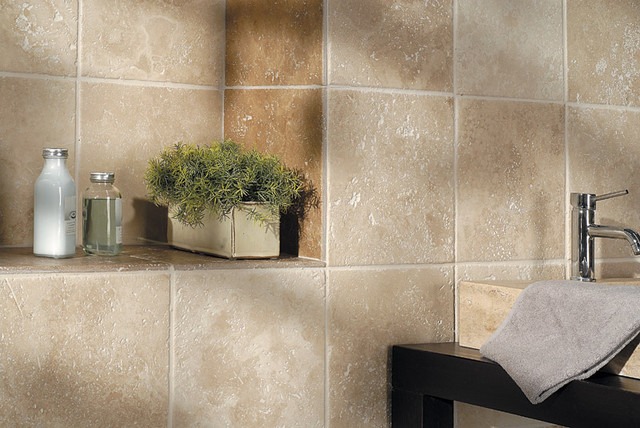If your bathroom is starting to look grubby because the silicone seal around the bathtub or basin is peeling off, degraded, or is covered with mould, it’s time to remove and replace this with new silicone sealant. A sanitary silicone is formulated to inhibit mould growth and will keep your bathroom looking good for longer and ensure a waterproof seal around fittings.
Replacing Silicone Sealer Steps
![]()
When replacing the seal around a bathtub or basin, it is essential to remove all traces of the old silicone. Loosen the edges with a sharp craft knife.
GOOD TO KNOW
- If there is mould growing along the edge of a bathtub or basin, pop on some disposable or rubber gloves and wear a dust mask to prevent inhaling mould spores.
- Where there is a lot of mould you might want to remove this first before removing the old silicone. Wipe the area with a mixture of 1 cup of household bleach to a litre of water to kill off mould colonies. Leave this overnight and rinse with clean water before removing old silicone.
![]()
You can pull away quite a bit of old silicone once it is loose.
![]()
Acetone (nail polish remover) dissolves silicone, so use this to remove any stubborn silicone left behind. A cotton bud dipped in acetone will also make sure that the area to be sealed is clean, and since it evaporates quickly it will be dry and ready for application in no time at all.
![]()
![]()
![]()
The Pattex air pulse sanitary sealer is very easy to use. Simply break the seal, remove the cap and press the nozzle to release a regulated flow. Angle the can slightly to apply. This method reduces the possibility of applying too little or too much as you work.
The new Pattex ‘air pulse’ sanitary silicone does away for the need to use a caulking gun and, when used in conjunction with the Pattex Profiler Kit, makes application quick and easy.
GOOD TO KNOW
A thick bead of silicone sealer will offer more protection and last longer that a thin layer, which will tend to disintegrate and peel off quickly.
![]()
Using a Pattex profiler allows you to remove excess sealer and leave a smooth finish around sanitary fittings. Have some tissue paper handy for wiping away excess sealer from the profiler as you work. You can also use a piece of tissue to remove any sealer from the surface before it has time to dry.
![]()
Removing and replacing old sealer will instantly refresh a bathroom but it is important to use a sanitary sealer in a bathroom or room with high humidity or moisture, as sanitary silicone contains a mould inhibitor that other universal or standard silicones don’t.
You can use sanitary sealer around bathtubs and basins, as well as in shower cubicles. Always make sure any old silicone is removed and the area is clean and dry before application.

